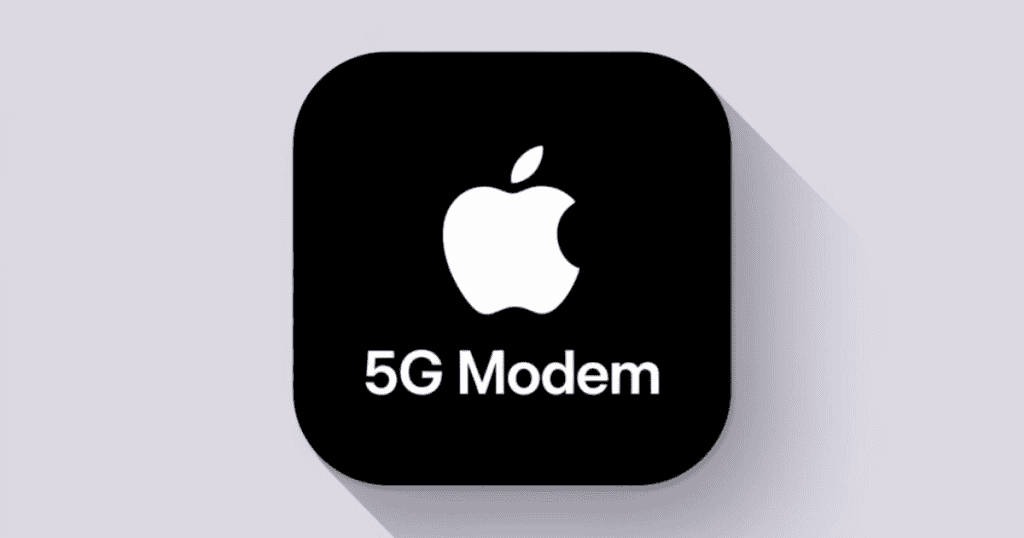Apple’s impending launch of its proprietary 5G modem in the iPhone SE 4, anticipated for Q1 2025, signals a pivotal evolution in mobile technology. This strategic move, following the acquisition of Intel’s modem division, aims to curtail Apple’s dependency on Qualcomm and enhance user experience through improved connectivity and efficiency. As analysts forecast significant market shifts, it raises questions about the future landscape of mobile communications and competition. What implications will this have for both consumers and industry players alike?
Apple’s 5G Modem Overview
Apple is actively developing its own 5G modem, a strategic initiative that is expected to reshape its mobile technology landscape greatly. This effort, which began in 2018, culminates in the expected launch of the modem in future iPhones, specifically starting with the iPhone SE 4 and iPhone 17 Slim.
By acquiring the majority of Intel’s smartphone modem business in 2019, Apple has invested considerably in this development, aiming to reduce its longstanding reliance on Qualcomm as the primary supplier of modems.
Analysts predict that Apple’s 5G modem shipments could reach 35-40 million units in 2025, with further growth anticipated to 160-180 million units by 2027, underscoring the importance of this shift in the competitive mobile technology landscape.
Timeline for Launch
The anticipated timeline for the launch of Apple’s in-house 5G modem marks a pivotal moment in the company’s mobile technology evolution.
The 5G modem is expected to debut with the iPhone SE 4, scheduled for release in Q1 2025. Following this, the high-end iPhone 17 Slim is slated for announcement in September 2025, both models showcasing Apple’s commitment to integrating proprietary technology.
Analyst Ming-Chi Kuo projects that Apple will ship 35-40 million units of its 5G modem in 2025, with expectations to rise to 90-110 million units by 2026.
Meanwhile, Apple has extended its supply agreement with Qualcomm through March 2027, ensuring a seamless shift as it phases out reliance on Qualcomm’s modems.
Impact on Qualcomm Partnership
Shifting towards in-house 5G modem development is poised to greatly impact Qualcomm’s partnership with Apple.
With the anticipated launch of Apple’s 5G modem in the iPhone SE 4 and iPhone 17 Slim, Apple is set to considerably reduce its dependency on Qualcomm modems.
The recently extended licensing agreement with Qualcomm, valid until March 2027, will serve as a interim phase, allowing Apple to phase out reliance on third-party suppliers.
Analysts forecast that Apple’s modem shipments could reach 35-40 million units in 2025, indicating a substantial shift in the modem business landscape.
This strategic move aligns with Apple’s broader vision of integrating Apple silicon into its devices, further diminishing Qualcomm’s market dominance in mobile connectivity.
Expected Features of the Modem
With the upcoming release of Apple’s in-house 5G modem, users can expect a significant enhancement in connectivity and speed compared to existing Qualcomm solutions.
This modem represents a pivotal shift in performance and energy efficiency for Apple’s iPhone lineup.
Key expected features include:
- Improved Connectivity: Enhanced signal reception and stability, ensuring seamless internet access in various environments.
- Optimized Energy Efficiency: Reduced heat generation and lower power consumption, contributing to longer battery life during 5G use.
- Advanced Performance: Competitive speeds and reliability that may rival Qualcomm’s offerings, although concerns remain regarding its overall performance.
This in-house development reflects Apple’s commitment to greater control over its hardware components and a reduced dependency on third-party suppliers like Qualcomm.
Advantages for Apple Users
Numerous advantages await Apple users with the upcoming integration of the company’s in-house 5G modem in future iPhone models. This shift promises enhanced connectivity options and improved performance, including reduced latency and increased data speeds. The seamless integration of hardware and software is expected to lead to better battery efficiency and overall device functionality. Additionally, Apple’s proprietary technology will likely enhance profit margins, allowing for further investments in user experience enhancements and software optimizations tailored to their devices.
| Advantage | Description |
|---|---|
| Improved Performance | Reduced latency and faster data speeds |
| Battery Efficiency | Enhanced power management due to optimized integration |
| Profit Margins | Increased margins enabling further innovations |
Future of 5G in iPhones
Apple’s upcoming integration of its in-house 5G modem is poised to redefine the future of connectivity in iPhones. This strategic shift not only minimizes dependency on Qualcomm but also highlights Apple’s commitment to proprietary technology.
Key aspects include:
- Launch Timeline: The iPhone SE 4 will debut with Apple’s 5G modem in Q1 2025, followed by the ultra-thin iPhone 17 in Q3 2025.
- Market Impact: Analyst Ming-Chi Kuo forecasts shipments of Apple’s 5G modem to start at 35-40 million units in 2025, potentially soaring to 160-180 million by 2027.
- Performance Enhancement: Apple’s 5G modem aims to deliver superior connectivity and performance compared to existing Qualcomm solutions, paving the way for a new era in iPhone models.
Industry Reactions and Predictions
The announcement of Apple’s in-house 5G modem has elicited a diverse range of reactions from industry experts and analysts. Many view this shift as a strategic move to reduce dependence on Qualcomm, potentially leading to a notable decline in Qualcomm’s market share by 2027.
Predictions suggest that Apple’s 5G modem could debut with the iPhone SE 4 in Q1 2025, with anticipated shipments ranging from 35 to 40 million units in the first year.
However, concerns regarding potential overheating and performance issues compared to Qualcomm’s established technology have been raised. These challenges may affect consumer perceptions and adoption rates, but increased competition in the mobile connectivity sector could ultimately benefit users through enhanced features and competitive pricing.
MacReview Verdict
The impending launch of Apple’s in-house 5G modem signifies a pivotal moment in mobile technology, poised to reshape the competitive landscape. With enhanced connectivity and battery efficiency, the new modem is anticipated to elevate the user experience notably. As Apple continues to reduce dependence on Qualcomm, one must consider: how will this strategic shift influence the broader telecommunications industry? The transformative potential of this development may redefine the future of 5G in iPhones and beyond.




